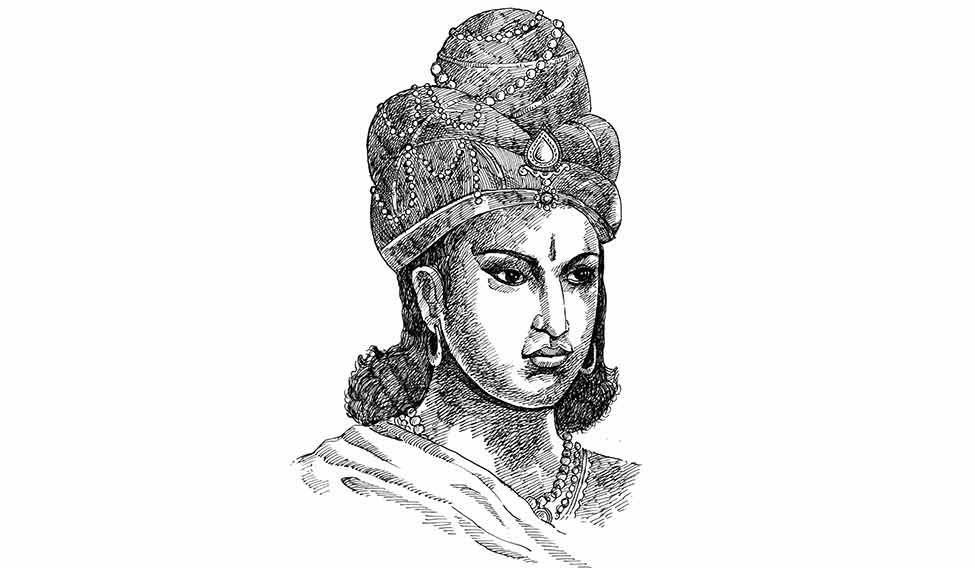
Emperor Ashoka has been many things to many people: a ruler who killed his kin, a conqueror who forsook conquest out of guilt, a shrewd genius, or a righteous monk. With myriad legends and tales covering the historical core, the picture that we have of him is thickly layered. Some have called him Ashoka, the great, others have pondered over the myth-like nature of his biography, while still others have been fascinated and inspired by his legacy.
History has been kind when it comes to Ashoka Maurya and many a source and evidence survive. The edicts that he inscribed on Chunar sandstone pillars and rock faces, marking important trade routes and towns, as well as written records by admirers and chroniclers have helped historians to paint a biography of the monarch.
It is said that Ashoka was not the favoured son, not chosen to be king and he had to kill all his 99 brothers to usurp the throne. And then, there are tales about his change of heart, of his sudden conversion to Buddhism and of his righteous and moral rule thereafter.
As it often happens, most of these tales are, well, tales.
From historical evidence, one excavates the figure of an immensely practical and an extremely smart ruler, one who understood his times very well, and could devise efficient solutions to tackle contemporary issues. Rather than calling him somebody who was ahead of his time, it is better to regard him as somebody who was completely in sync with his times and conjured excellent ways to deal with it.
Ashoka ruled somewhere between early third to mid-second century BCE from his capital city of Pataliputra (present-day Patna). The early years of his reign were involved in territorial conquests and expansions, resulting in the extension of his kingdom from Taxila in the west to Tosali in the east. Being the monarch of such a vast territory, he was aware of the cultural and racial diversity of his many subjects. The policy devised by him to integrate this cross-cultural terrain into one is remarkable. It is, in fact, one of the reasons why he is listed today among the great men who influenced Indian history.
This was the policy of the still mysterious dhamma, the Prakrit word for dharma. Dhamma is very hard to be translated into English. Incorporating elements from Buddhism and Hinduism, it means something on the lines of righteousness, morality and piety. Through this, Ashoka aimed at providing his subjects a ‘crash course’ on a practical, convenient and a highly moral lifestyle. The many edicts spread across the length and breadth of his empire give one a vivid picture of what dhamma entailed. Taking precise care of using the regional script (Kharoshthi or Brahmi, as appropriate) and in the language of the masses, these were probably also read out to general gatherings. Elders were to be respected, animals were not be sacrificed and conquest through dhamma was to be regarded as the highest conquest of all.
These edicts also tell us that he called himself Devanampiya (dear to the gods) and looked at his subjects as his children, taking utmost care to keep them happy and content. Ashoka even appointed officers whose job was to monitor that dhamma reached the deepest layers of the Magadhan social fabric.
The eighth regnal year of Ashoka saw the infamous Kalinga war. Legends speak of his extreme grief on witnessing the aftermath, which led him to forsake violence forever and turn into a Buddhist. Of course, legends romanticise. It is more probable that his conversion to Buddhism was a gradual process and the implementation of related policies was a calculated manoeuvre to tackle current political and administrative needs.
Cynicism aside, Ashoka did play a major role in spreading Buddhism beyond the borders of India. History has named a son and a daughter, who were ardent Buddhist missionaries, and who travelled to Ceylon to spread the Buddhist message. Ashoka is also credited with dividing the remains of Buddha and building the earliest stupas in the subcontinent.
Which brings us to the emperor’s contributions in the field of arts and aesthetics. The monumental remains from the Mauryan period speak of an age of refined taste and heightened aesthetic sensibilities. The polished sandstone pillars that stand as world-axes, capitals topped by exquisite animals in places like Vidisha, Rampurva and Sarnath, among others, stand as testimony.
In the line of Alexander of Macedonia and Peter of England, Ashoka is called one of the greats of history, and quite fittingly so. Mahatma Gandhi espoused his idea of ahimsa in the struggle against the British, the Ashoka chakra has found pride of place in the national flag, and the lions from Sarnath were chosen as the symbol of the country post independence.
Whatever his political intentions and territorial ambitions may be, the importance of Ashoka in Indian history cannot be dimmed. Even today, his lions stand tall and his legacy endures.
Shubhasree Purkayastha is with the outreach department, National Museum, New Delhi.





